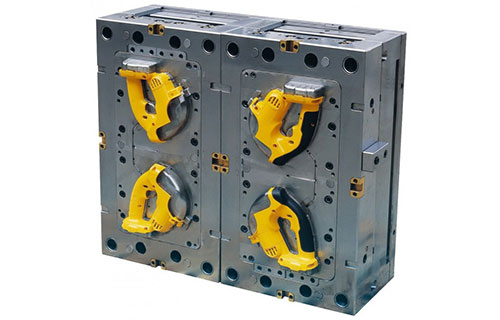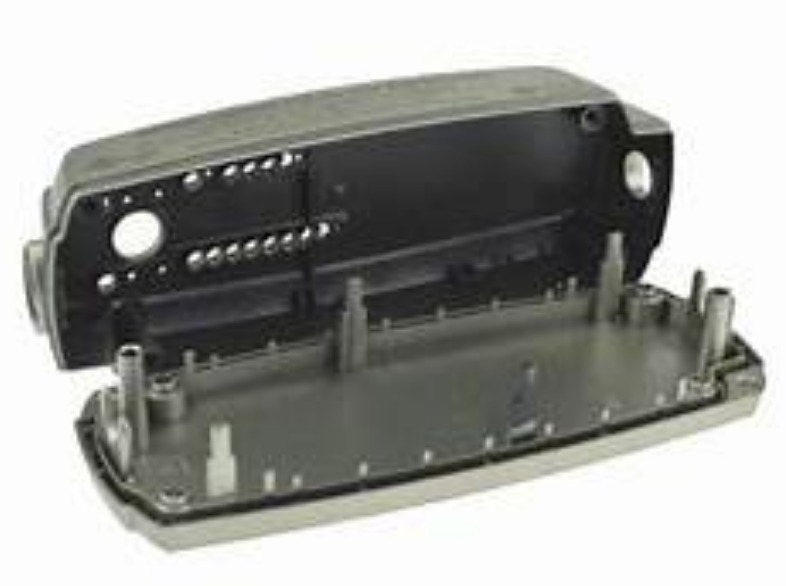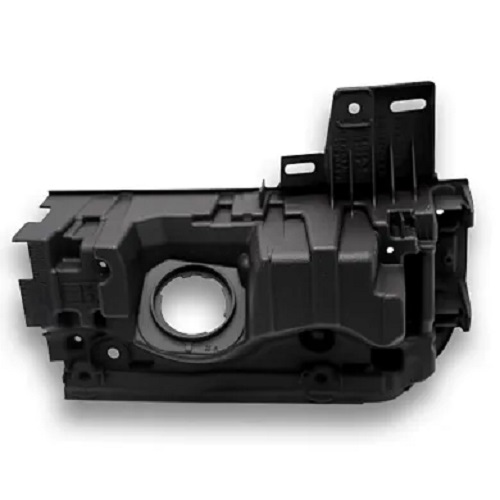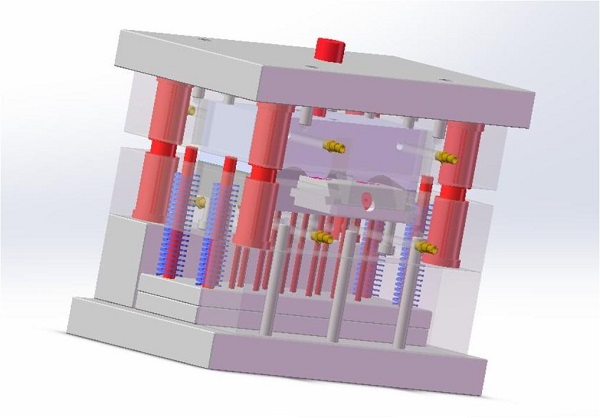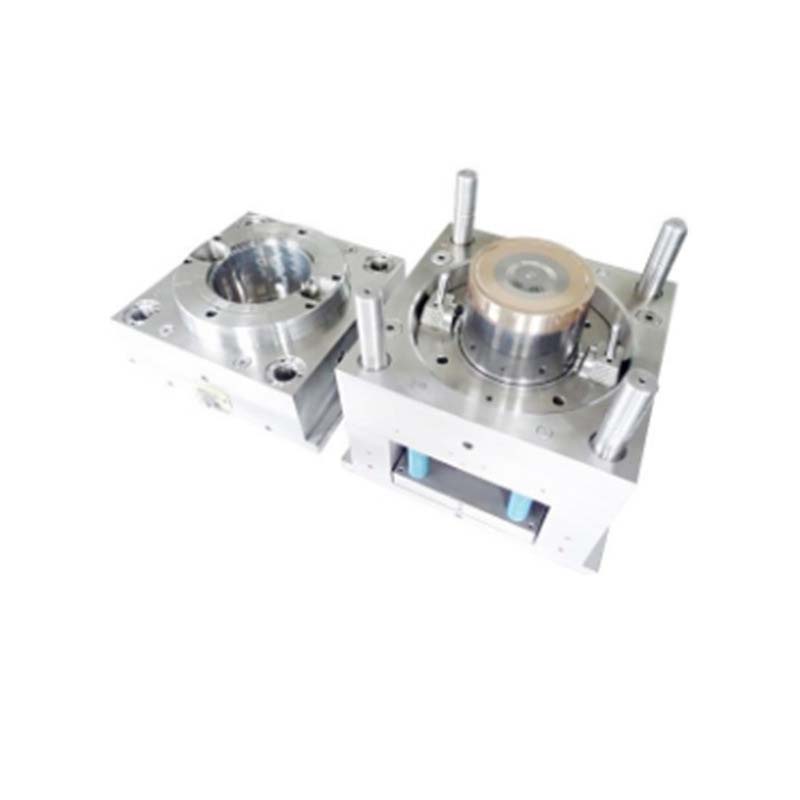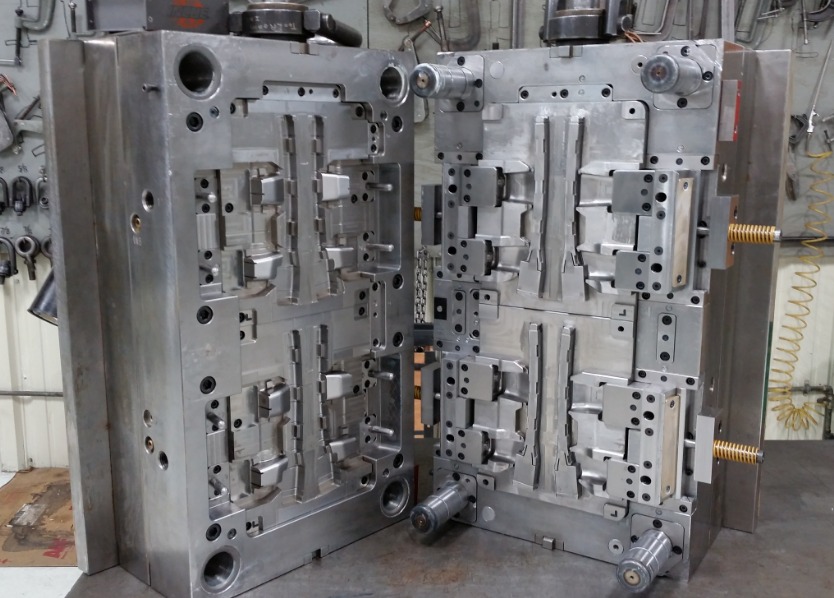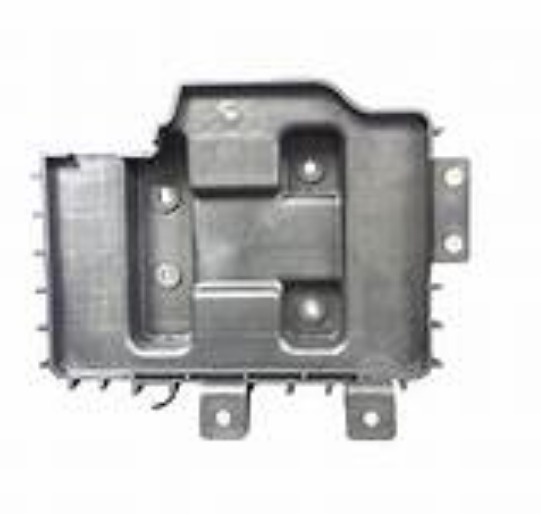What is Two - Shot Injection Molding?
Definition and Basic Process
Two - Shot Injection Molding, also known as overmolding or multi - shot molding, is an advanced manufacturing process that allows for the creation of complex plastic parts with multiple materials or colors in a single operation. This process uses two or more injection units, each loaded with a different material, typically thermoplastics.
The basic process begins with the first injection unit injecting the primary material into a mold cavity. Once the first material has cooled and solidified to a certain extent, the mold either rotates, slides, or is reconfigured in some way. Then, the second injection unit injects a secondary material onto the already - formed first - shot part. The two materials bond together, creating a single, unified component with combined properties of both materials. For Yigu Technology example, in the production of a toothbrush, the first shot could be a hard plastic for the handle, and the second shot could be a soft rubber for the grip area, providing comfort and better handling.
Key Components and Machinery
- Injection Molding Machine: The heart of the two - shot injection molding process. It has multiple injection units (at least two for two - shot molding). Each injection unit is responsible for melting and injecting its respective material into the mold. The machine also controls the injection pressure, speed, and temperature, which are crucial for the quality of the final product. For instance, a high - end Arburg two - shot injection molding machine can precisely control these parameters, ensuring consistent results in large - scale production.
- Mold: Custom - designed molds are used in two - shot injection molding. These molds are complex and must be carefully engineered to accommodate the two - step injection process. They often have moving parts, such as rotating cores or slides, to reposition the partially - molded part for the second injection. For Yigu Technology example, a mold for producing a two - colored automotive interior component may have a rotating mechanism that positions the first - colored part into the correct position for the second color injection.
- Material Feeding System: This system is responsible for supplying the raw materials (plastic pellets) to the injection units. It needs to be accurate to ensure the right amount of each material is fed into the process. Some modern feeding systems can also blend different materials in precise ratios before they are injected, adding another layer of flexibility to the two - shot molding process.
How Two - Shot Injection Molding Enhances Design from Different Angles
Material Combination and Property Optimization
One of the most significant advantages of two - shot injection molding is the ability to combine materials with different properties in a single part. This allows for the optimization of the part's performance in various applications. For Yigu Technology example, by combining a rigid material like polycarbonate (PC) with a flexible material such as thermoplastic elastomer (TPE), manufacturers can create components that have a strong, stable structure (from the PC) and a soft, grippy surface (from the TPE).
In the automotive industry, this material combination is often used in the production of interior components like door handles and steering wheels. The rigid base provides the necessary strength and durability to withstand daily use, while the soft, flexible outer layer offers a comfortable grip for the driver. In the electronics industry, it can be used for the housing of devices. The rigid material protects the internal components, and the flexible part can be used for shock - absorption or to create a non - slip surface, enhancing the overall user experience. A study by [a leading industry research firm] found that products using two - shot injection molding with optimized material combinations showed a 30% increase in durability compared to single - material counterparts in simulated usage tests.
Geometric Complexity and Design Freedom
Two - shot injection molding breaks through the limitations of traditional injection molding in terms of geometric complexity. Traditional injection molding often struggles with creating parts that have complex internal structures or undercuts. However, two - shot injection molding can handle these challenges with relative ease.
Complex internal structures can be achieved by using the first shot to create the base structure and the second shot to fill in the intricate details or cavities. For instance, in the production of some high - performance mechanical components, internal channels for fluid or gas flow can be precisely molded. A medical device manufacturer was able to create a complex syringe body with integrated internal valves using two - shot injection molding. The first shot formed the outer body of the syringe, and the second shot created the internal valve mechanism, which was previously very difficult to manufacture with a single - shot process. This not only improved the functionality of the syringe but also reduced the need for additional assembly steps. According to industry data, the use of two - shot injection molding for such complex parts has increased by 25% in the past five years, driven by the demand for more compact and efficient products.
Aesthetic Appeal and Surface Finish
This process also offers great potential for enhancing the aesthetic appeal of products. Two - shot injection molding enables the creation of products with two or more colors, which can be used to create eye - catching designs or to provide functional color - coding. For example, in consumer electronics, a two - colored smartphone case can be produced, with one color for the main body and another for the edges or accents, adding a unique and stylish look.
In addition to color, it can also achieve different surface finishes. A product can have a smooth, glossy surface on one part and a textured, matte surface on another. In the home appliance industry, a blender can be designed with a smooth, easy - to - clean body (first shot) and a textured, non - slip grip area (second shot). This not only improves the aesthetics but also the functionality of the product. A market survey showed that products with enhanced aesthetics achieved through two - shot injection molding had a 15% higher market acceptance rate compared to products with standard designs.
Functional Integration and Component Consolidation
Two - shot injection molding allows for the integration of multiple functions into a single component, reducing the need for multiple parts and assembly steps. This leads to cost savings, improved product reliability, and potentially smaller product sizes.
In the medical device field, a single - use diagnostic device can be designed to have multiple functional parts integrated. The first shot may create the main housing and sample - collection area, while the second shot adds a built - in reagent reservoir and a detection mechanism. In the aerospace industry, components such as aircraft interior panels can be produced with integrated lighting fixtures, ventilation ducts, and structural reinforcements in a single two - shot molding process. This reduces the weight of the final product, which is crucial for fuel efficiency and overall aircraft performance. Research has shown that products with functional integration through two - shot injection molding can reduce assembly time by up to 40% compared to products made from multiple assembled parts.
Yigu Technology's Perspective
As a non - standard plastic metal products custom Supplier, Yigu Technology highly values Two - Shot Injection Molding. This technology plays a pivotal role in our design innovation journey. It allows us to break free from the constraints of traditional manufacturing and turn our clients' most intricate design concepts into reality.
The ability to combine different materials in one part through two - shot injection molding is a game - changer for us. For example, when a client needed a custom - designed automotive component with both high - strength and anti - vibration properties, we used two - shot injection molding to combine a rigid metal - like plastic for the structural part and a soft elastomer for the vibration - damping part. This not only met the client's functional requirements but also enhanced the overall performance of the component.
In terms of design freedom, two - shot injection molding enables us to create complex geometries that were previously unattainable. We have successfully produced parts with internal channels and undercuts for a medical device client, which improved the functionality of their products and eliminated the need for multiple assembly steps.
FAQ
What types of materials can be used in two - shot injection molding?
Common materials used in two - shot injection molding include thermoplastics like acrylonitrile butadiene styrene (ABS), polypropylene (PP), and polycarbonate (PC). These thermoplastics are popular due to their excellent mechanical properties, such as high strength and good heat resistance. Elastomers, such as thermoplastic elastomers (TPEs) and silicone rubbers, are also frequently used. TPEs offer flexibility and softness, which is great for applications requiring a grippy or shock - absorbing surface. The key is material compatibility. The two materials chosen must be able to bond well together. For example, some TPEs are specifically formulated to bond strongly with certain thermoplastics, ensuring a reliable and durable two - shot molded part.
How does two - shot injection molding affect the production cycle time?
Compared to traditional single - shot injection molding, two - shot injection molding generally has a longer production cycle time. In traditional injection molding, a single material is injected into the mold, and after cooling and solidification, the part is ejected. In two - shot injection molding, there are two injection steps. First, the primary material is injected and partially cooled. Then, the mold is reconfigured (rotated, slid, etc.), and the second material is injected. This additional step and the need for more precise temperature and pressure control during each injection increase the overall cycle time. However, factors like the complexity of the mold design and the efficiency of the injection molding machine can also influence the cycle time. Advanced machines with quick - acting injection units and efficient mold - repositioning mechanisms can help reduce the time difference. Also, proper pre - production planning, such as optimizing the material melting and injection parameters in advance, can minimize the impact on the production cycle.
What are the common challenges in two - shot injection molding and how to solve them?
One common challenge is poor material bonding between the two shots. This can lead to delamination or separation of the two materials in the final product. To solve this, manufacturers can optimize the process parameters, such as adjusting the injection temperature and pressure. A higher injection temperature for the second shot can sometimes improve the adhesion between the two materials. Another challenge is mold wear. The complex mold movements and the high - pressure injection of multiple materials can cause increased wear and tear on the mold. Regular mold maintenance, using high - quality mold materials, and improving the mold design to reduce stress concentrations can help prolong the mold's lifespan. Additionally, issues like air entrapment during the injection process can occur, which may result in voids or bubbles in the final part. This can be addressed by adding proper venting channels to the mold to allow air to escape during injection.
